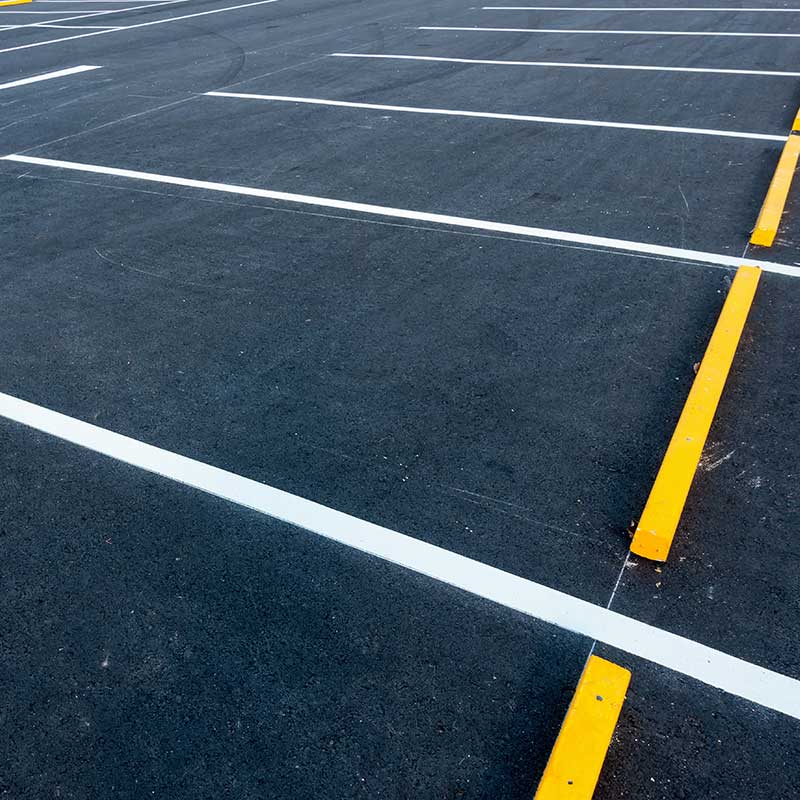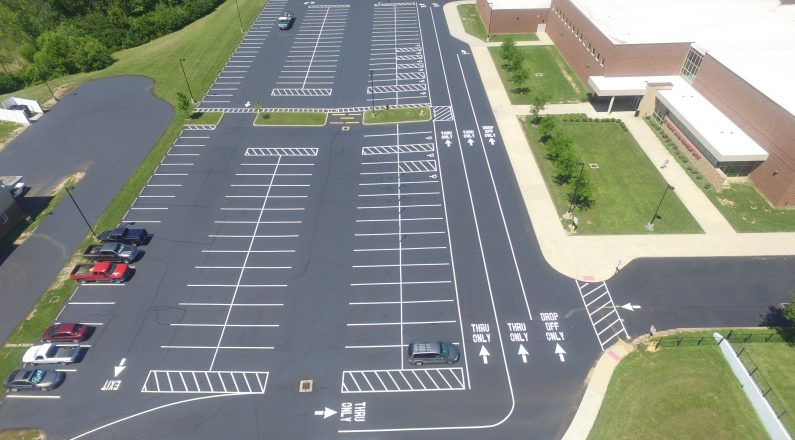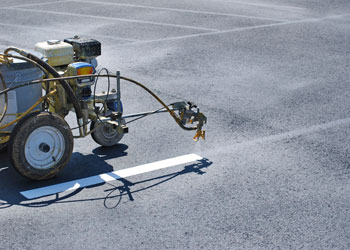A Comprehensive Guide to the most effective Practices in Roadway Paint for Public Freeways
It is crucial to consider not just the immediate impact of road markings but also their long-term maintenance and visibility under varying environmental conditions. Understanding these factors can significantly influence the effectiveness of roadway markings, yet several are not aware of the subtleties entailed.
Value of Roadway Painting
Road painting plays an essential role in maintaining website traffic safety and security and performance, with research studies suggesting that well-marked streets can decrease accidents by approximately 30%. The clear difference of lanes, pedestrian crossings, and other important markings serves to guide pedestrians and motorists, cultivating a predictable environment when driving. This predictability is important for reliable navigation and aids minimize confusion, which can commonly result in accidents.
In addition, road markings are instrumental in sharing vital info, such as speed limitations and directional advice. They enhance presence, specifically in adverse climate condition or throughout nighttime driving. The visibility of reflective products in roadway paints further improves exposure, enabling chauffeurs to determine important markings that influence their behavior when traveling.

Choosing the Right Products
Selecting proper materials for road paint is important to achieving long lasting and reliable markings. The choice of materials directly influences the exposure, durability, and security of road markings. Usual options include water-based paints, solvent-based paints, and thermoplastic materials, each with special residential properties and applications.
Water-based paints are ecologically friendly, quick-drying, and appropriate for most weather, making them excellent for city settings. They might require even more constant upkeep due to use and tear. Solvent-based paints, while supplying excellent bond and longevity, can pose environmental and health and wellness concerns due to volatile natural substances (VOCs)
Thermoplastic materials are significantly popular as a result of their strength and long-lasting performance. These products are heated prior to application, allowing for a strong bond with the sidewalk. Their reflective properties boost visibility, especially at night.
When selecting materials, aspects such as website traffic quantity, climate conditions, and the certain sort of road should be taken into consideration. Conducting complete research study and consulting with manufacturers can assist make certain that the chosen materials satisfy neighborhood laws and requirements, inevitably adding to more secure roads and enhanced chauffeur understanding.
Efficient Application Techniques
Reliable application techniques play an important duty in making sure that road markings achieve ideal efficiency and longevity. This strategy lessens overspray and makes sure that the paint is used uniformly, which is important for keeping roadway security.
Before application, it is vital to prepare the surface adequately. This consists of cleaning the roadway of particles, oil, and wetness to improve bond. Furthermore, temperature and humidity need to be considered throughout the application process to achieve the most effective results.
Using the proper equipment is likewise important. Line stripers equipped with adjustable widths enable exact markings that adhere to governing requirements. Furthermore, it is vital to adjust the equipment consistently to make certain uniformity in paint thickness.
Timing and Ecological Aspects
Proper timing and factor to consider of ecological elements are Learn More essential for the effective application of road markings. The efficiency of road paint largely relies on temperature, wind, and moisture problems at the time of application. Ideally, temperature levels ought to be between 50 ° F and 85 ° F(10 ° C to 29 ° C) for optimal attachment and healing. When temperatures are also low, paint might not cure appropriately, leading to premature wear and lowered presence.
Moisture levels additionally play an essential duty; high humidity can prevent drying times, while exceedingly dry conditions might cause quick dissipation of solvents, impacting the paint's performance. Wind can present pollutants and debris, possibly jeopardizing the quality of the markings. It is advisable to choose calm days for application.

Scheduling paint jobs throughout positive weather problems can significantly boost the long life and effectiveness of roadway markings - Line painting company. By carefully examining these elements, companies can make certain that road markings are used successfully and preserve their exposure and resilience over time.
Maintenance and Durability Techniques

One efficient approach is to execute a systematic painting program based on web traffic quantity and environmental variables - Pavement marking. Higher website traffic areas might call for more regular upkeep to counteract the abrasive results of vehicles and climate condition. Furthermore, the usage of long lasting materials, such as thermoplastic and epoxy paints, can substantially expand the lifespan of roadway markings
Cleansing road surfaces to get rid of debris and pollutants is one more essential aspect of maintenance. This makes sure optimum adhesion of brand-new paint and enhances the general performance of the markings. Utilizing innovative modern technologies, such as computerized tracking systems, can streamline the monitoring process and optimize maintenance schedules.
Integrating these techniques will not only improve the visibility and safety of roadway markings yet additionally lower lasting prices related to constant repainting and repair work. (Road painting near me)
Conclusion
View Line painting Abbotsford in a full screen map
In recap, implementing best techniques in roadway painting is crucial for enhancing safety and security and performance on public highways. The go to website selection of appropriate click for more info products, integrated with reliable application strategies and factor to consider of environmental factors, adds to the longevity and exposure of road markings. Regular upkeep and assessments even more extend the life-span of these markings, eventually reducing crashes and enhancing overall roadway usability. Sticking to these guidelines fosters much safer driving conditions and helps with smoother traffic flow.
The visibility of reflective products in roadway paints even more improves exposure, permitting vehicle drivers to recognize important markings that influence their habits on the roadway.
Selecting suitable products for roadway paint is vital to attaining efficient and durable markings.While the preliminary application of roadway markings is critical, ongoing upkeep approaches are similarly important to ensure their durability and exposure. In addition, the usage of durable materials, such as polycarbonate and epoxy paints, can substantially expand the lifespan of road markings.
The selection of suitable materials, integrated with reliable application methods and factor to consider of ecological variables, adds to the resilience and visibility of road markings.